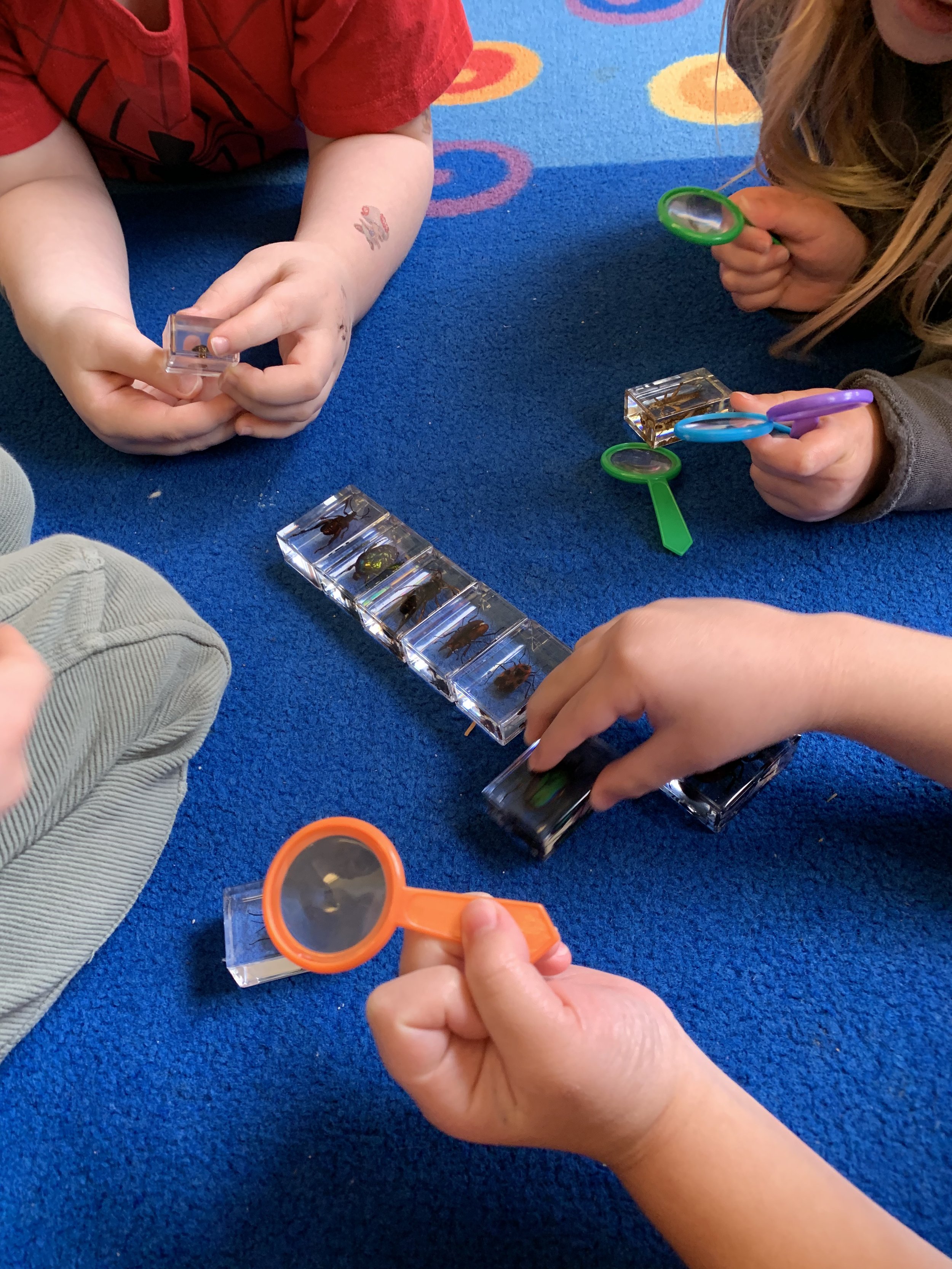Working to create positive foundations of learning since 1985.
Dramatic Play Area Example: Camp Out
Cooking Day: Vegetable Soup
Manipulatives and Discovery: Insects Study
We utilize The Creative Curriculum as our base curriculum. The inquiry-based approach and flexibility to enhance the different studies help our teachers identify and support student developmental objectives.
Second Step curriculum focuses on social emotional learning and development. Utilizing group learning, students practice identifying emotions and problem solving strategies.
Sandcastle Preschool’s program is set up to reflect areas that promote learning:
Language, Literacy, and Library
When children are exposed to rich vocabulary, they learn the words they will need to read and write. Research has shown that children who have large vocabularies and lots of experience using language are more successful in school.
Dramatic Play
Dramatic play is central to a child’s healthy development and learning during the preschool years. For this reason it is important that each classroom includes an area designed to inspire creative and imaginative play. When children engage in dramatic play they deepen their understanding of the world and develop skills that will serve them throughout their lives.
Blocks
Blocks are one of the most valuable learning materials we have. When children build with blocks they learn math concepts, such as the number of blocks that fill a certain space. They compare the height of their buildings and learn geometric shapes. When they lift, stack and move blocks, they explore weight and size. Each time children use blocks they are making decisions about how to build a structure or solve a construction problem.
Manipulatives and Discovery
The manipulative area includes puzzles, various table blocks, small construction materials (legos, board games, shells, buttons, etc.). When children use manipulatives, they explore how things work, learn to be creative and use their imaginations, strengthen and control the small muscles in their hands, and learn math ideas and concepts.
Art
Drawing, painting, pasting, molding and constructing are not only enjoyable, but also provide important opportunities for learning. Children express original ideas and feelings, improve their coordination, learn to recognize colors/textures and develop creativity and pride in their accomplishments. When children are engaged in art activities, talking with them about what they are doing and asking questions that encourage them to think about their ideas and express feelings help the student to connect creativity with words.
Sensory
It may be surprising to know that the sensory area is an important part of a preschool program. Both sand and water are natural materials for learning. When children pour water into measuring cups, they are exploring math concepts. When they drop corks, stones, feathers and marbles into a tub of water they are scientists exploring which objects float and sink. When they comb sand into patterns they learn about both math and art.
Gross Motor
Each day students will go outside or in our large indoor play space to practice motor movement by running, jumping, balancing, riding bikes, etc.
Music and Movement
Singing and moving to music give children a chance to hear and appreciate different kinds of music, express themselves through their movement and practice new skills.
Cooking
When children cook they have an opportunity to learn about nutrition, be creative and to prepare their own healthy snacks. When children learn to follow picture recipe cards they develop skills they need to read and write. Measuring allows them to practice math. Whipping egg whites into a meringue and melting cheese are lessons in science.


